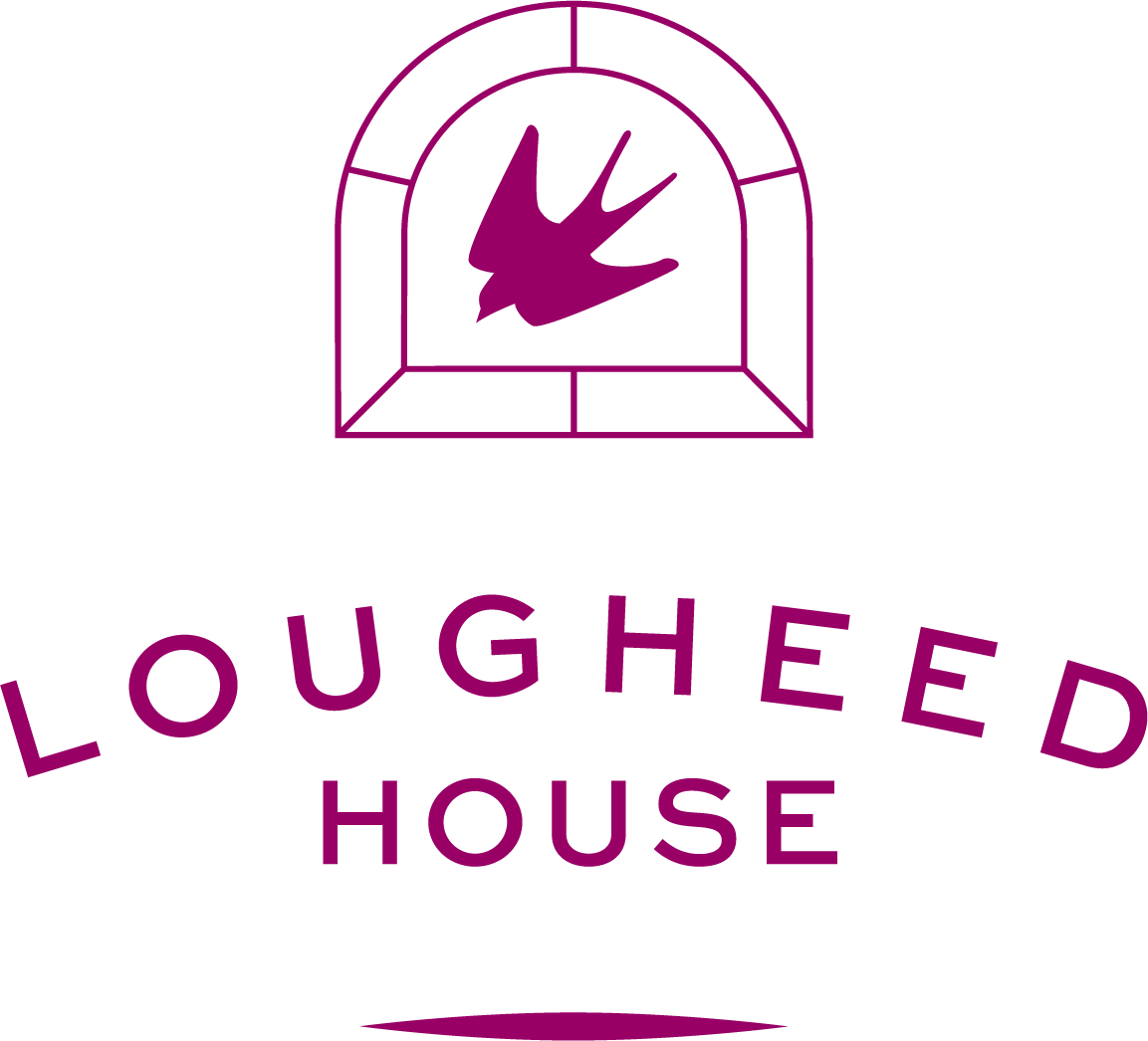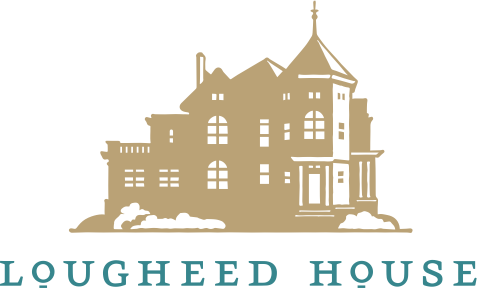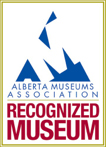Challenge and Celebrate
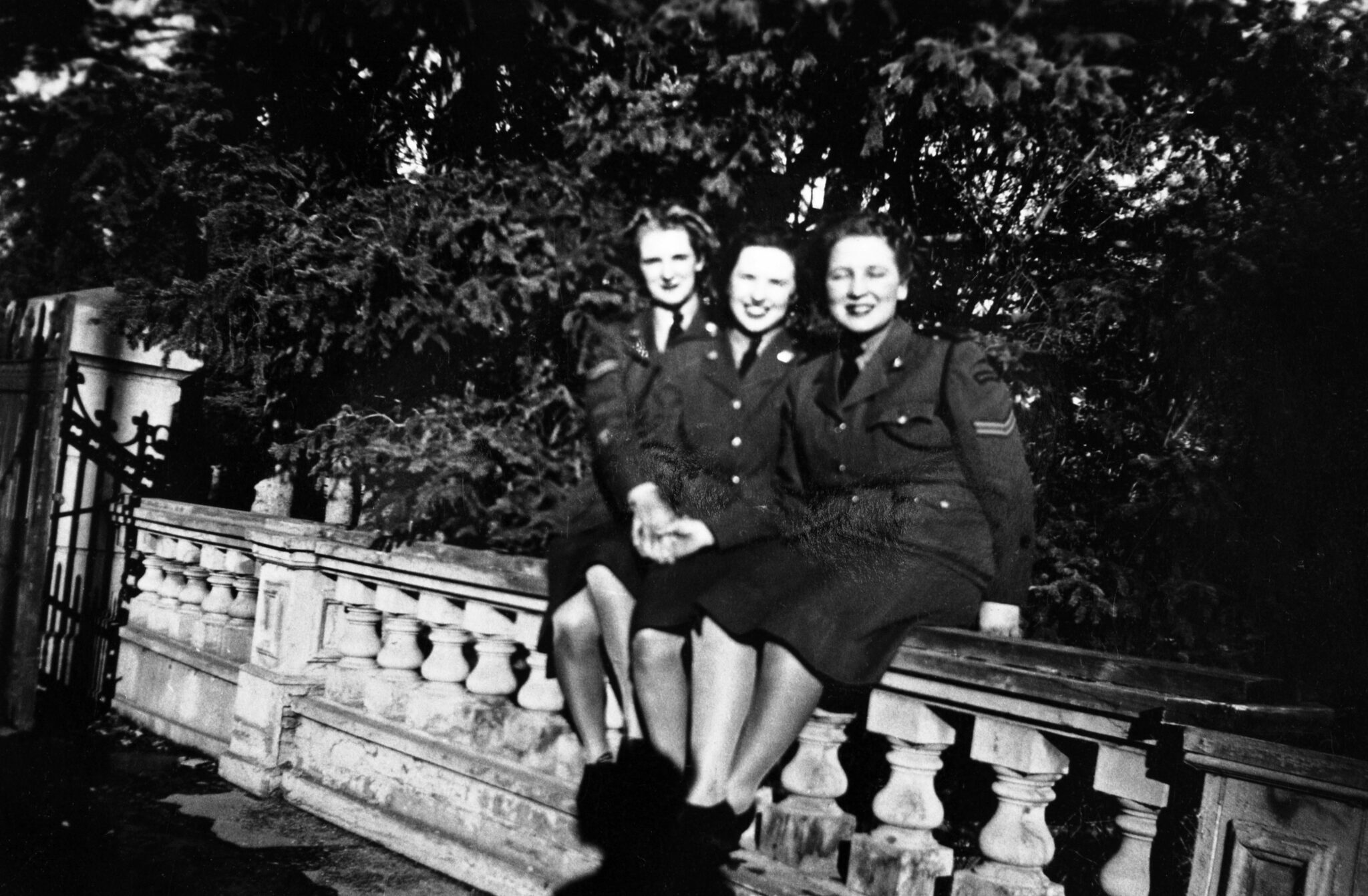
Written by Kay Burns
In 2021, the campaign theme for International Women’s Day is #ChooseToChallenge. Their statement is that “We can all choose to challenge and call out gender bias and inequality. We can all choose to seek out and celebrate women’s achievements. Collectively, we can all help create an inclusive world.” As we acknowledge and work to rectify inherent biases present today, we can also reflect on the evolution of women’s roles and achievements historically.
Lougheed House has a 130-year history of connections to strong and resilient women. Isabella Lougheed was the earliest notable woman connected to Lougheed House during its first 45 years. Between 1938 and 1940, the house was home to the Dominion Youth Training Program, a program for young women to train in domestic service. In 1941, the Canadian Women’s Army Corps (CWAC) took over the house as barracks for women participating in war service. The 1950s saw the house transformed into a Red Cross blood donor clinic, led by Gertrude O’Keefe and operated efficiently by a contingent of nurses and lab assistants. In the 1990s, the Lougheed House Conservation Committee was formed with Trudy Cowan and Jennifer Bobrovitz at the helm, providing groundwork and visioning for the transformation of the house into a museum along with an avid team of volunteers. Today, the museum is led by a proficient and dynamic team of women including Kirstin Evenden as Executive Director, Caroline Loewen as Curator, and Holleay Rohm as Programs Manager, supported by a predominantly female staff. Lougheed House has been a recurrent witness to women choosing to challenge themselves and others.
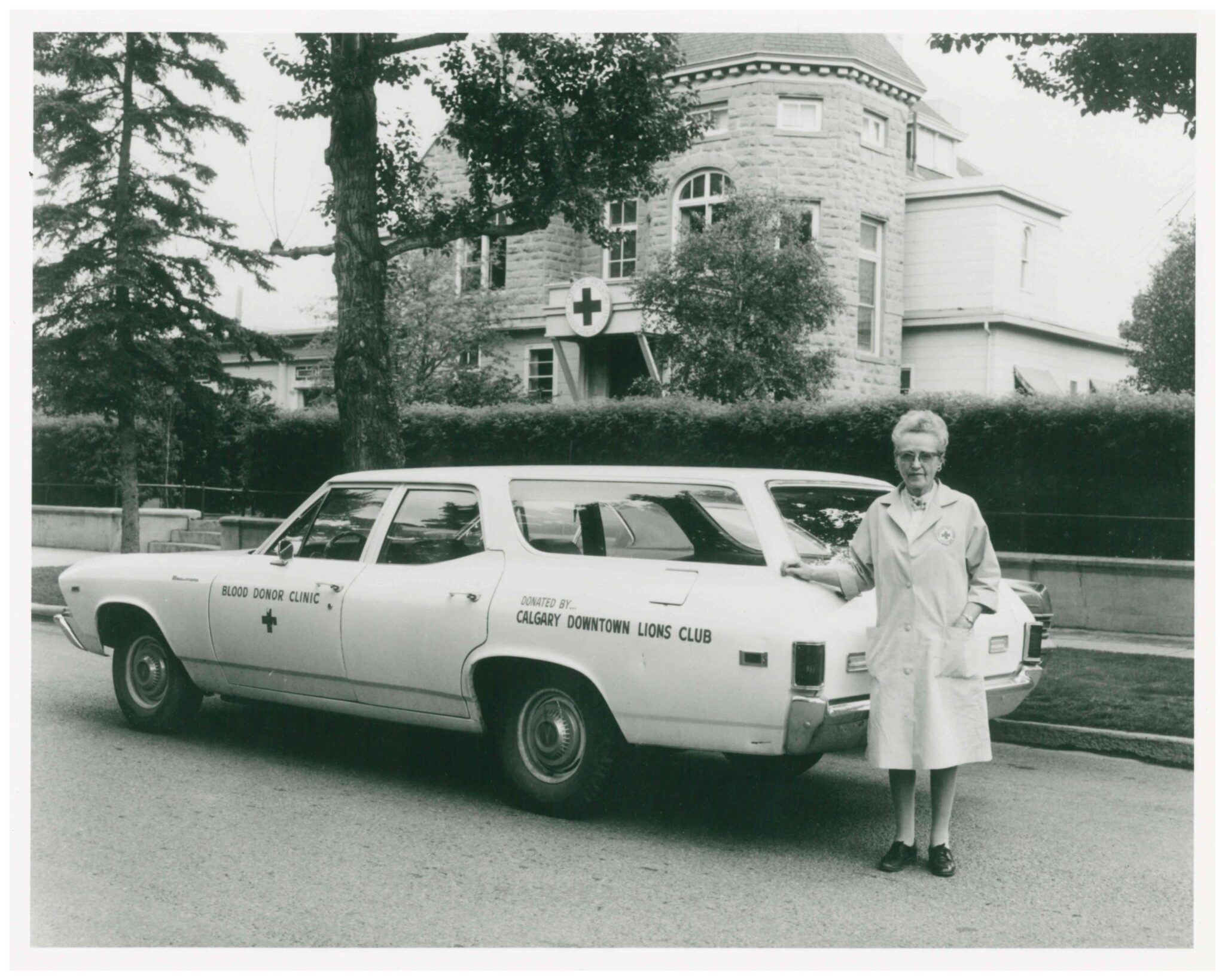
Mrs. Gertrude O’Keefe in front of the Red Cross blood donor clinic at Lougheed House, Calgary, Alberta | Photography by Cadman | 1971 | Glenbow Archives NA-2903-76
During the 1941-46 era when the house and grounds became barracks for CWAC, the position of women was both transformative and troubled. CWAC was formed as an answer to labour shortages during the war. The government needed able-bodied men to go overseas to fight at the front, which meant there was a need for army personnel to fill non-combatant roles at home. The roles for women were extensive and included clerical, cooking, drafting, electrical, and cypher decoding.
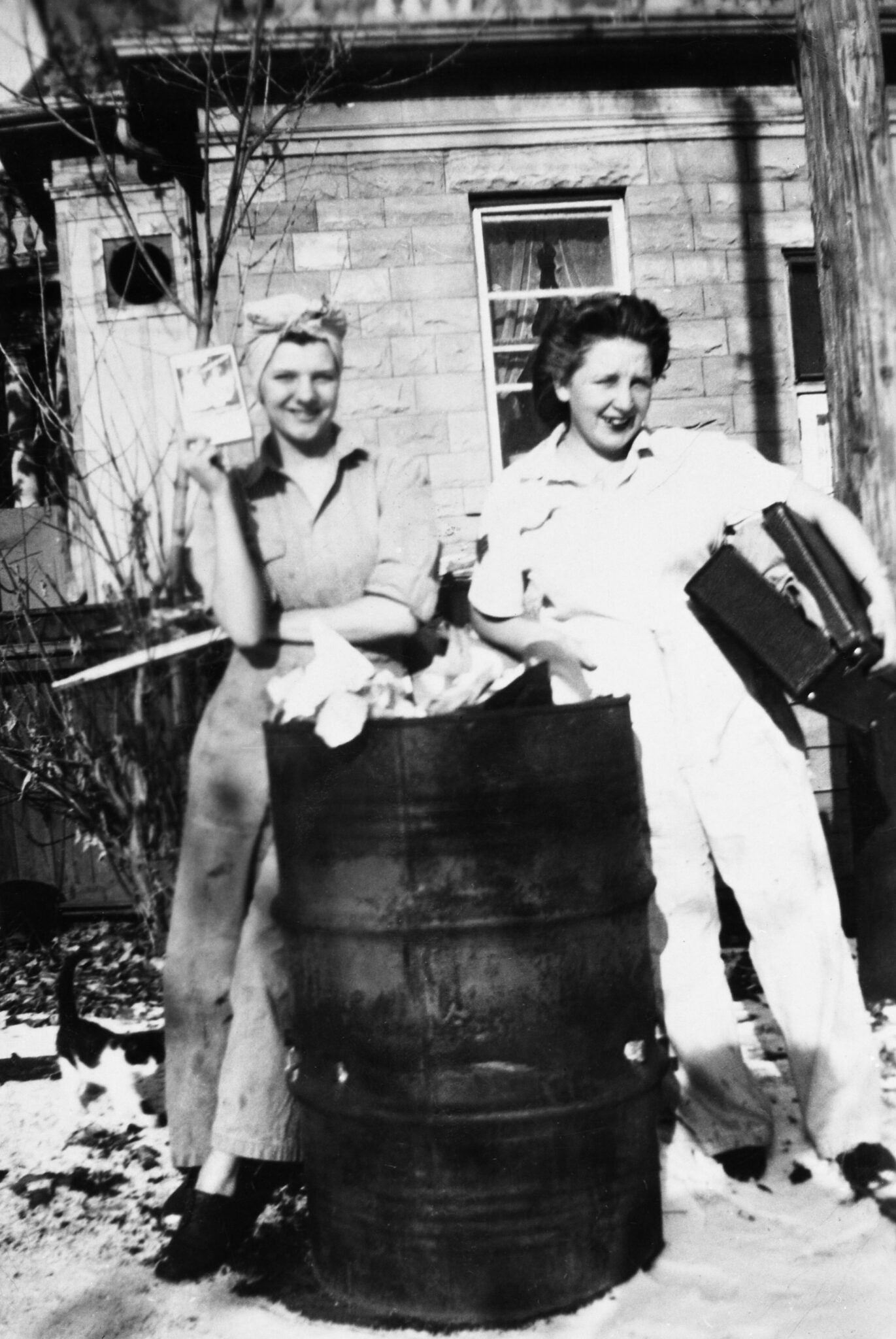
Wash day at Lougheed House, Calgary, Alberta | Photographer Unknown | c. 1944-46 | Glenbow Archives
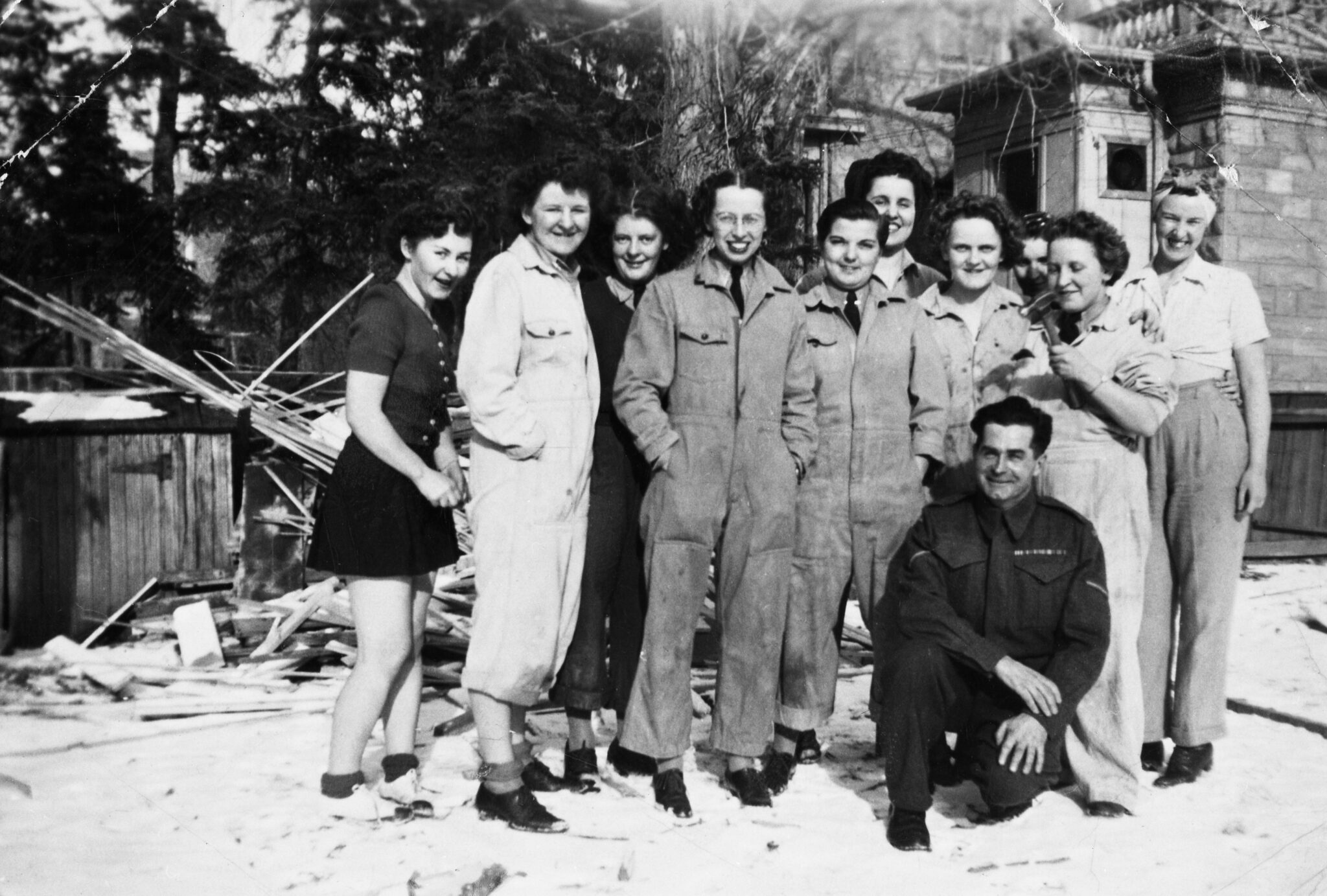
Canadian Women’s Army Corps in yard of Lougheed House, Calgary, Alberta | Photographer Unknown | c. 1944-46 | Glenbow Archives NA-5473-11
Given that this role for women in the Army was new, it was also perceived with suspicion and disdain. Many people felt that women should not be participating in any kind of military roles, that the place for women was at home ensconced in domestic duties and looking after their family. The repercussion of those perspectives was an increasingly pervasive attitude that women who joined the army were “loose” and were no longer feminine:
“During World War II, this negative historical conceptualization of women’s military service was reinforced by a rash of pervasive gossip maligning the moral respectability of servicewomen. Exaggerated reports of drunkenness, licentiousness, pregnancy, venereal disease and prostitution surfaced in the media, society and the armed forces. This ‘whispering campaign,’ … impeded recruitment efforts in Canada…. [and] exposed preexisting gender and class biases. In order to combat poor public opinion, the Canadian Army exerted itself to construct an idealized public image of the CWAC that simultaneously met prevailing standards of femininity and was also morally respectable.” (Atlantis, p. 46)
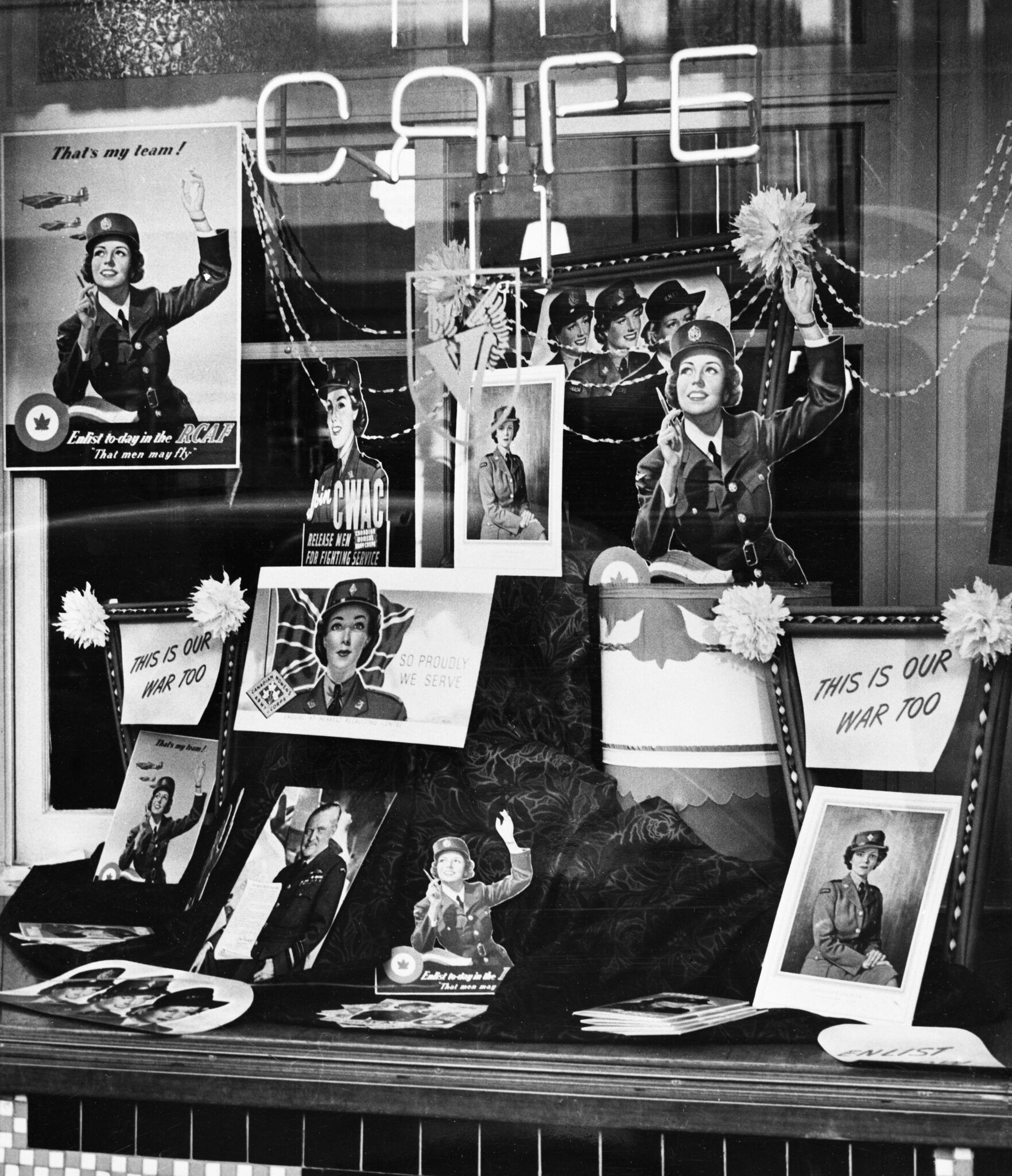
Display in café window encouraging enrolment in the Canadian Women’s Army Corps | Photographer Unknown | c. 1943 | Glenbow Archives NA-4784-7
Rather than advocate for women as intelligent, strong, committed individuals to dissuade the negative connotations of the whisper campaign, the army instead undertook an overzealous gendering by placing great emphasis on the femininity of women involved in CWAC. They implemented strict regulations regarding how the women should dress, wear cosmetics, and style their hair. The only aspect of their attire that was not regulated by the army was their underwear, which resulted in numerous jokes. This kind of humour only served to undermine the serious responsibilities of women in uniform, implying that women’s role in the military is trivial. Further, because of this emphasis on a biased perspective of idealized femininity, the military’s promotional and propaganda materials about CWAC did not accurately represent the diversity of shape, size, age, and ethnicity of the women who participated.
The whisper campaign and its harmful consequences for women had detrimental effects on the recruiting efforts of CWAC. Lieutenant Colonel Mary Dover, a Calgary woman, was one of the first female officers in Canada and led many programs to inspire and support women in the military. As a recruiter she frequently dealt with derogatory and nasty complaints from both men and women. In response to one angry letter, Lt.-Col Dover suggested they keep it within their archives to “be included in the history of recruiting to show how difficult their job has often been.” (Ladies or Loose Women)
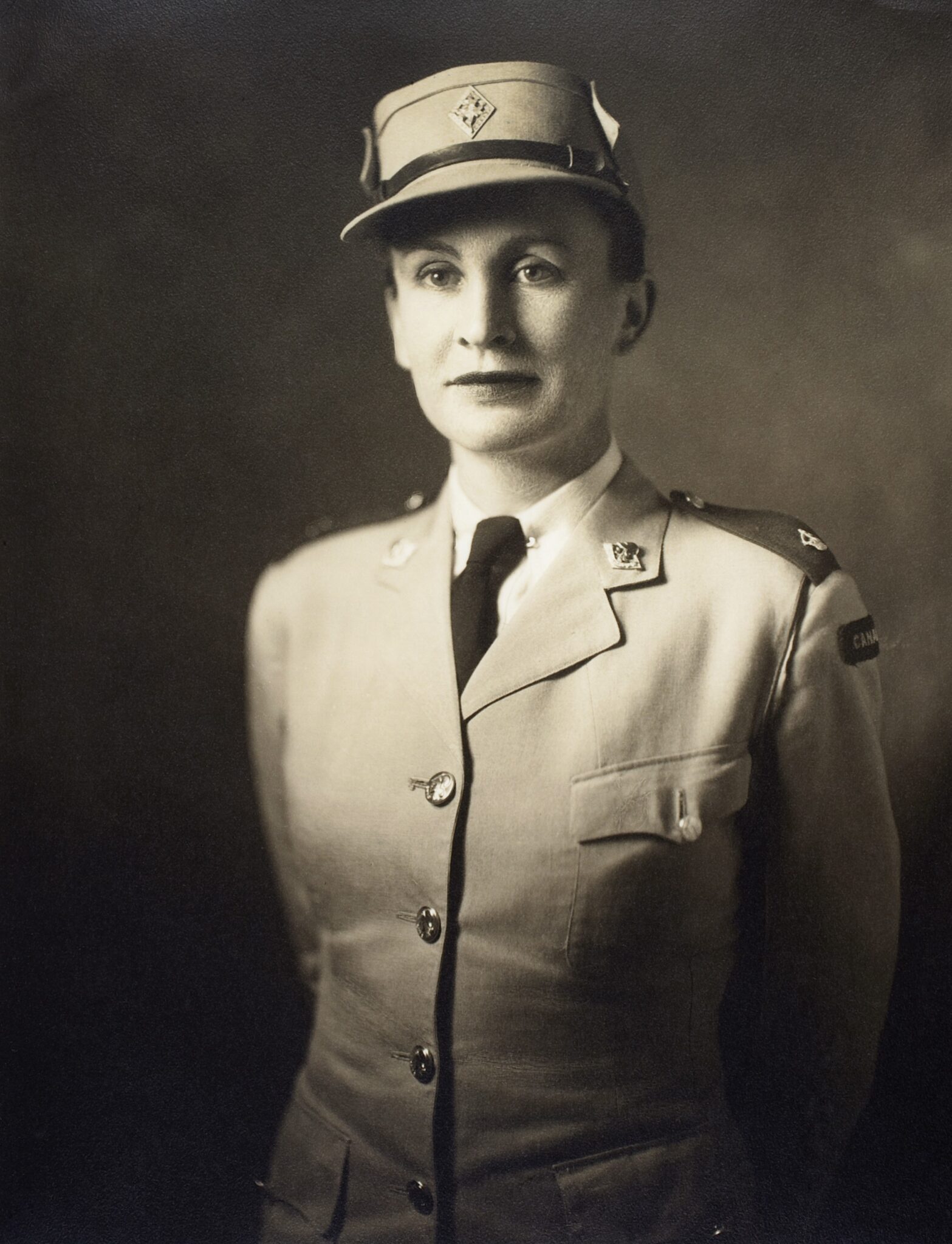
Mary Dover in Canadian Women’s Army Corps uniform, Montreal, Quebec | Photography by Blank and Stoller | 1948 | Glenbow Archives NA-5684-1
In spite of the difficulties for women in CWAC, this kind of program opened paths for women to continue to choose to be in the work force after the war and to achieve greater independence. International Women’s Day has been celebrated since 1911. According to the IWD website “The story of women’s struggle for equality belongs to… the collective efforts of all who care about human rights.” At Lougheed House, we acknowledge that every step along the way of women championing women has contributed to progress. That progression broadens and evolves in new ways continuously as we look to advocate for all women including people who identify as women, trans women, women of colour, Indigenous women, differently-abled women – all of whom contribute to humanizing our communities through equity, diversity, and inclusion.

Canadian Women’s Army Corps, sitting on wall of Lougheed House, Calgary, Alberta | Photographer Unknown | c. 1944-46 | Glenbow Archives NA-5473-10
Resources
International Women’s Day Official Website
Atlantis, Volume 26.1, fall/winter 2001
Legion Magazine
Ladies or Loose Women
We respect your privacy as per our Privacy Statement. We welcome your thoughtful and respectful comments, and your first name will appear with each submission. All comments will be moderated by Lougheed House before they appear on the site. We check for posts regularly and will respond as soon as we can. We do not guarantee that your comments will be published.
By submitting a comment, you accept that Lougheed House has the right to reproduce and publish that comment in whole or in part, in any form we choose. We do not endorse the opinions expressed in comments. Comments on this page are moderated according to our Submission Guidelines. Comments are welcome while open. We reserve the right to close comments at any time.
